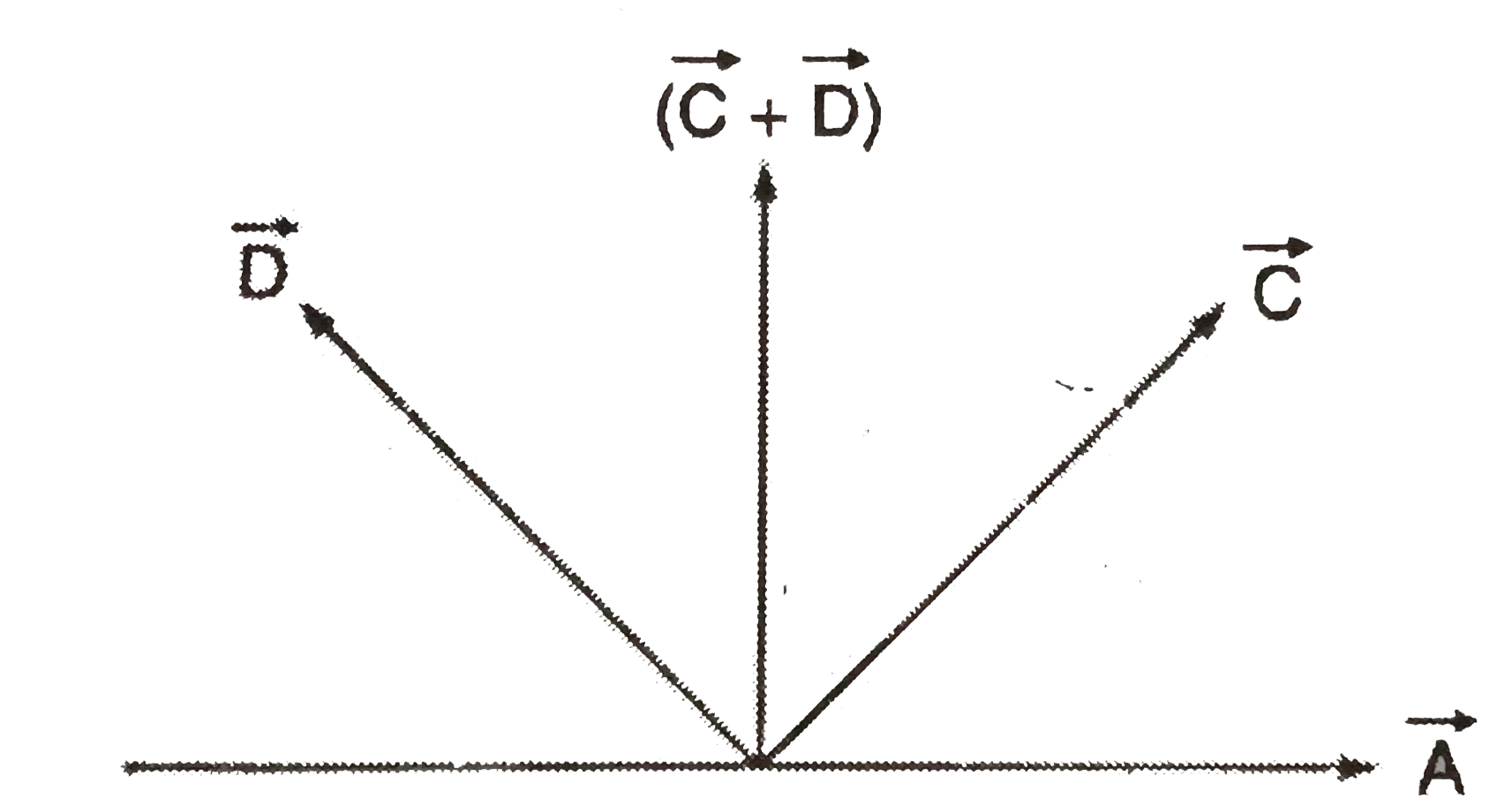If →A×→B=→C+→D, them select the correct alternative:
→B is parallel to →C+→D
→A is perpendicular to →C
Component of →C along →A = Components of →D along →A
Component of →C along →A =-Components of →D along →A
The correct Answer is:D

In Fig.360 few can say that component of →C along →A=−component ofvecDalongvecA.
Topper's Solved these Questions
- VECTORSBOOK - GRB PUBLICATIONCHAPTER - VECTORSEXERCISE - MORE THAN ONE CHOICE IS CORRECT
15 Videos
- VECTORSBOOK - GRB PUBLICATIONCHAPTER - VECTORSEXERCISE - ASSERTION- REASON
1 Videos
- VECTORSBOOK - GRB PUBLICATIONCHAPTER - VECTORSEXERCISE - PROBLEMS FOR PARCTICE
23 Videos
- UNITS AND DIMENSIONSBOOK - GRB PUBLICATIONCHAPTER - UNITS AND DIMENSIONSEXERCISE - Link Compression
6 Videos
Similar Questions
Knowledge Check
If →A+→B+→C=0, then →A×→B is
A→B×→CB→C×→BC→A×→CDNone of theseGiven →C=→A×→Band→D=→B×→A. What is the angle between →C and →D ?
A30∘B60∘C90∘D180∘If (→a×→b)×→c=→a×(→b×→c) where →a,→b and →c are any three vectors such that →a.→b=0,→b.→c=0 then →a and →c are:
AInclined at an angle of π/6 between themBPerpendicularCParallelDinclined at an angle of π3 between them
If →a,→band→c are three vectors such that →a×→b=→c,→b×→c=→a,→c×→a=→b then prove that |→a|=∣∣→b∣∣=|→c|
View SolutionIf →a,→band→c are vectors such that →a.→b=→a.→c,→a×→b=→a×→c,a≠0. then show that →b=→c.
View SolutionIf →a,→band→c are three non zero vectors such that →a×→b=→cand→b×→c=→a. Prove that →a,→band→c are mutually at right angles and ∣∣→b∣∣=1and|→c|=|→a|
View SolutionIf (→a×→b)×→c=→a×(→b×→c), where →a,→b and →c are any three vectors such that →a.→b≠0,→b.→c≠0, then →a and →c are:
View SolutionABCD is parallelogram →A,→B,→Cand→D are the position vectors of vecticles A, B, C, and D with respect to any origin, them:
View Solution
